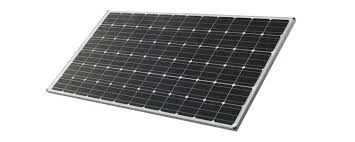Understanding the Real Cost of Solar Panels
The Real Cost of Solar Panels An In-Depth Analysis
As the global community increasingly turns its attention towards renewable energy, solar panels have emerged as a leading choice for sustainable power generation. However, while many consumers are drawn to the environmental benefits of solar energy, a critical examination of the real costs associated with solar panels is necessary for informed decision-making.
At first glance, the installation of solar panels appears to be a formidable investment. The upfront cost can range widely, typically between $15,000 to $30,000 for a residential system, depending on factors like the size of the installation, location, and the type of panels selected. While this investment can seem daunting, it’s essential to explore the long-term benefits and savings that solar panels can provide.
One of the primary considerations in assessing the real cost of solar panels is the potential for significant reductions in electricity bills. Homeowners and businesses that harness solar energy often see their utility expenses decrease dramatically, which can lead to a return on investment within 5 to 10 years. Furthermore, many governments offer tax incentives, rebates, and financing options that can offset the initial cost, making solar installations more accessible. For instance, in the United States, the federal solar tax credit allows eligible taxpayers to deduct a substantial percentage of their solar panel installation costs from their federal taxes.
real cost of solar panels

Beyond financial implications, the environmental impact of solar panels cannot be overstated. The generation of electricity through fossil fuels contributes substantially to greenhouse gas emissions and climate change. By transitioning to solar energy, individuals and businesses can reduce their carbon footprint significantly. This environmental benefit also translates to social costs; less reliance on fossil fuels contributes to cleaner air and can mitigate health issues related to pollution.
However, it is important to remember that solar panels are not without their drawbacks. The manufacturing process for solar cells involves energy-intensive practices and materials that can be harmful to the environment. Additionally, the disposal of old or damaged panels poses a challenge, as they are not biodegradable and can lead to landfill issues.
In conclusion, understanding the real cost of solar panels requires a comprehensive view that includes both immediate financial considerations and long-term savings and environmental benefits. While the upfront investment can be substantial, the potential for reduced energy bills, government incentives, and positive contributions to sustainability makes solar energy a compelling option. As technology continues to evolve and prices drop, solar energy will likely become even more accessible, further promoting its adoption worldwide. Making an informed decision based on a thorough evaluation of these factors will empower consumers to embrace solar energy as a viable and responsible power source for the future.
-
String Solar Inverter: The High-Efficiency Solution for Smart Solar EnergyNewsJul.14,2025
-
Revolutionizing Rooftop Energy with the Power of the Micro Solar InverterNewsJul.14,2025
-
Power Independence with Smart Off Grid Solar Inverter SolutionsNewsJul.14,2025
-
On Grid Solar Inverter: Powering the Future with Smart Grid IntegrationNewsJul.14,2025
-
Monocrystalline Solar Panels: High-Efficiency Power for the Future of Clean EnergyNewsJul.14,2025
-
Bifacial Solar Panel: A Smarter Investment for Next-Generation Energy SystemsNewsJul.14,2025







